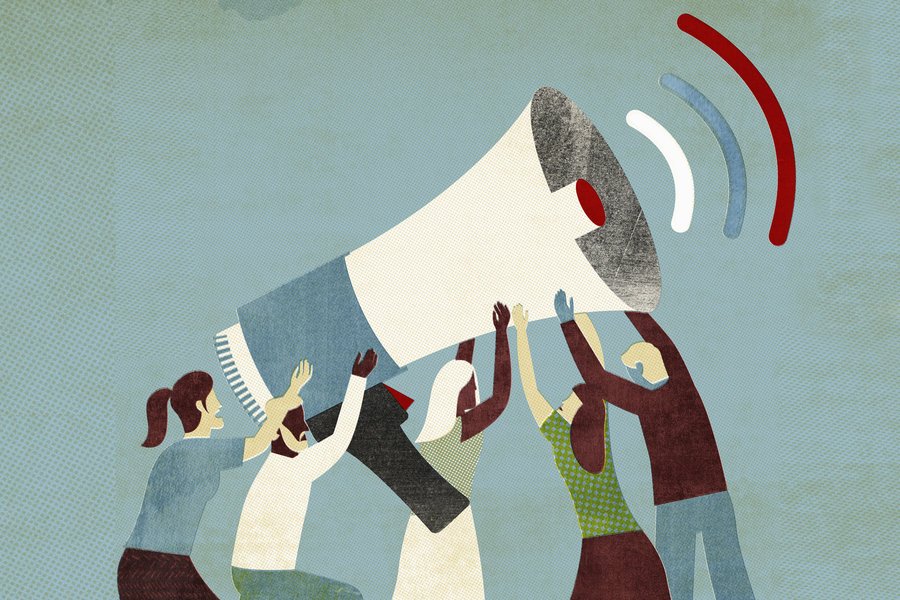2017, as Time magazine declared, was the year of the ‘silence breakers’. Women speaking up against sexual harassment in the entertainment and media industry spearheaded a global movement against the culture of sexual harassment that we live in. While it has taken down powerful creeps like Harvey Weinstein, Louis CK, Roy Moore and so on, it truly became a people’s movement.
It’s not that we broke the silence now. It’s not that we acknowledged the abuse that women suffer on a daily basis. It was the year when people finally started believing women.
What caught on like wildfire among the womenfolk of the internet was the sharing, support and solidarity of survivors of sexual harassment. Which turned out to be almost every woman and many from non-binary communities as well. The magnitude of this problem was shocking to some, appalling to some, a downright lie to a few. Some chose to say #notallmen, but some men found the courage to speak about the abuse they have faced too.
It was the year when people finally started believing women.
That day, I saw my Facebook timeline and twitter feed flooded with personal accounts of survivors of sexual abuse. The strength and solidarity that rose out of this were inspiring. And even though this movement still happens to be non-representative of the population (only 10% of the population uses the internet, out of which only 29% of internet users in India are women), one cannot deny the impact that this movement had.
There was a pattern to what women were saying though. They spoke about being catcalled at public places, being groped in buses and trains and getting molested on the streets.
We only spoke about stranger abuse.
Survivors owe their story to no one unless they choose to speak about it. However, if 86% of the rapes that happen in India are perpetrated by family, friends and acquaintances, and it is not being addressed, we know we have a problem. Personally, I did not see any women, either on my own timeline, or highlighted by the media, speaking of abuse by someone they knew and trusted, or someone who was in a position of power over them.
Raya Sarkar, a law student, created a list of sexual predators in academia, with inputs from survivors. It was not long before she was dismissed by everyone, including leading women’s rights activists who unanimously rejected her list. It’s hard to say what was more discouraging: the wholehearted dismissal of Sarkar’s efforts, or the fact that women still didn’t feel safe speaking up against abuse by known, powerful men.
We’re still wary of the absolute truth about abuse.
An intern once accused Justice AK Ganguly of sexually harassing her. RK Pachauri was accused of harassment, stalking and intimidation. So far, no meaningful results have come out of these cases. Even though many believed these women, many more dismissed their accusations as mere cries for “attention”, fake accusations and even asked the women to think of the families of their abusers before making allegations.
This is the reason why Indian women chose ‘safe’ abusers. Strangers, who are easy to talk about, easy to demonise. Speaking against them does not threaten the safety of women in their own workplaces, social circles, or homes.
The truly unique characteristic of the #MeToo campaign was that it was inspired by women speaking up against normalized abuse by powerful men. We still don’t have the space to address family and community violence. We’re still wary of the absolute truth about abuse. It’s not a complete campaign unless it speaks of abuse against all intersections. The silence about men in power is still unshattered, and until then, we cannot say that #MeToo has truly arrived in India.
Also Read: A Take On #MeToo From Two Sides Of The Gender Galaxy
Featured Image Credit: NPR
About the author(s)
Tanika Godbole is a writer/journalist based in Mumbai. She is interested in LGBT and women's rights, and is keen on writing about those topics. She also makes terribly drawn comics on human rights and pop culture. They can be found on https://www.facebook.com/godbolet/





How true, most abuse and sexual violence women experience is in their own homes. As a survivor of child sexual abuse I am still trying to to make my voice heard. My family has chosen to pretend and diminish my experiences. We in India still refuse to acknowledge that girls and women experience more abuse in their parental home than in their matrimonial home. Saving the girl child only brings a defenseless, unwanted human being into this world. The result is a life of struggle and mental illness.